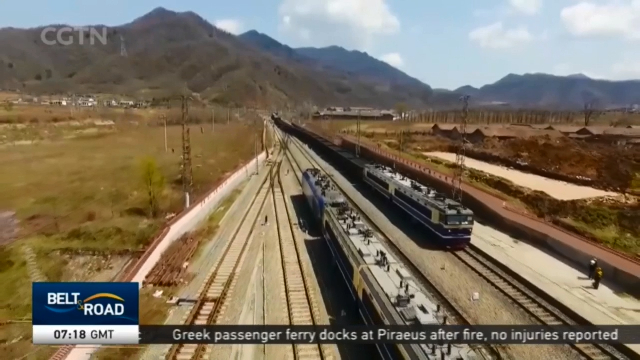
16:02, 29-Aug-2018
Belt & Road Initiative: Rail network expediting imports, exports
Updated
15:05, 01-Sep-2018
02:45

Five years have passed since China first launched the Belt and Road Initiative. At the heart of the Silk Road map lies Urumqi. It's a city that lies in the hinterland of Eurasia and connects the two major economic circles of the Asia-Pacific and Europe.
To cover more than three billion people in more than 40 Belt and Road countries, an efficient railway network is a must. The Urumqi Central Assembly Center works as the heart pumping blood into the arteries. Freight traveling in and out of China comes through this transportation hub every day. This one is carrying steel coils to Russia.
XIAO GUODONG, CHAIRMAN XINJIANG BA YI IRON&STEEL "The trading volume increases every year. Last year we sold 3-tons of steel and this year its estimated to be 6 tons. Our end customer's demand is 50 to 60 tons every year. So the market has great potential. We gather raw material from Central Asian countries, process it in Xinjiang, and send it to Russia."
Belt and Road collaboration like this continues to grow. To smooth the process of international cooperation, a new model of customs supervision was created. The Urumqi Multimodal Transport Customs Supervision Center sits just next door.
ZHENG WEIGUO, DEPUTY GENERAL MANAGER URUMQI MULTIMODAL TRANSPORT CUSTOMS SUPERVISION CENTER "The central assembly center is where the trains depart from and arrive. We are the stop before that. By sea, air, and land, we receive and assemble multimodal transported freight. Here, we provide one-stop services for all imported and exported goods. Inspection, document check, and declaration.
These newly built infrastructure networks not only enable higher transport efficiency, but open the door to new varieties and goods that were unaffordable in the past.
XIE HENG, TRAIN DRIVER URUMQI RAILWAY BUREAU "I've been driving these China-Europe trains since 2014. The freight used to be mostly hardware supplies. Now we have all kinds of stuff. I remember in the past we couldn't find certain imported food or supplies in stores close to home. But now, it's everywhere. We also used to spend lots of time searching for Russian chocolate."
Presently, here at the Xinjiang International Land Port Zone, there are 19 rail lines, reaching 17 countries in Asia and Europe. 3 regular trains depart every day. Experts have called the Belt and Road Initiative the most ambitious geoeconomic vision in recent years. Now it's becoming reality.

SITEMAP
Copyright © 2018 CGTN. Beijing ICP prepared NO.16065310-3
Copyright © 2018 CGTN. Beijing ICP prepared NO.16065310-3